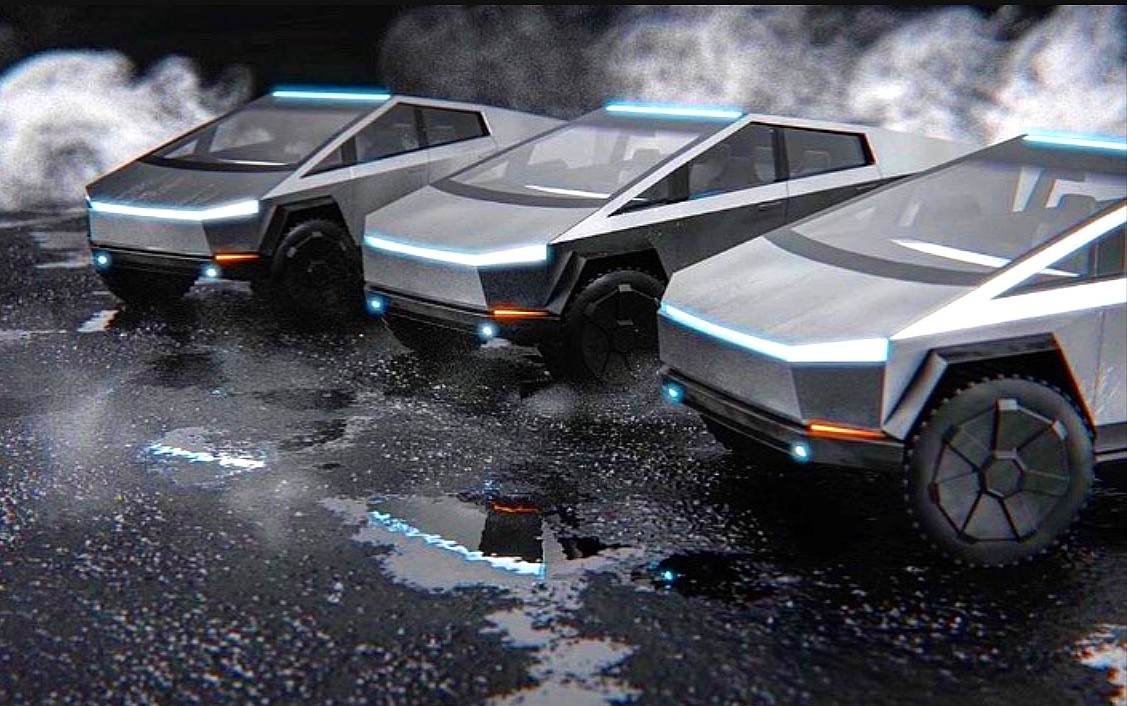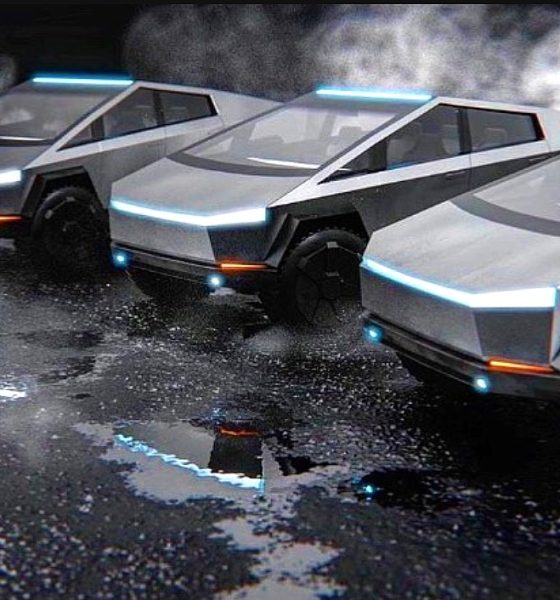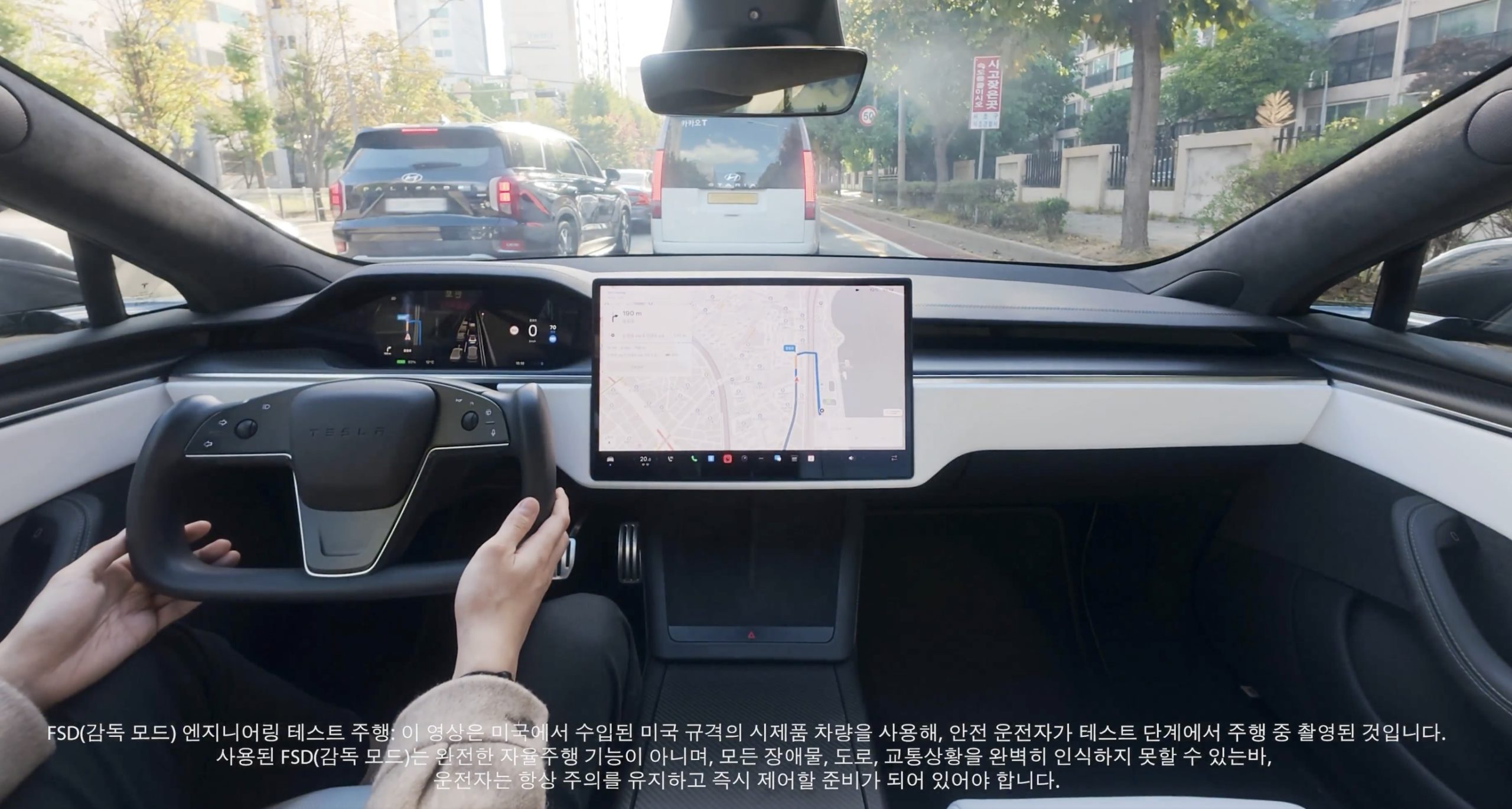

News
Tesla Cybertruck is in the crosshairs of many but Elon Musk isn’t worried
There is a point to be argued that the attention attracted by the Tesla Cybertruck is a double-edged sword. Granted, the vehicle has captured the interest of both the EV and traditional auto community primarily due to its stark XY design, but with this comes a ton of scrutiny from all sides. And in the months since its unveiling, the Cybertruck has received a healthy dose of scrutiny.
Critics pointing out negatives about Tesla’s upcoming vehicles is nothing new, and in the Cybertruck’s case, some of these were unfounded. Yet there were valid concerns about the vehicle. The truck is massive, for example, to the point where AR simulations of the vehicle indicated that it would not fit in an average 20×20 garage in the United States. Others, interestingly enough, questioned the vehicle’s capabilities as a legitimate off-roader due to its weight.
In true Tesla fashion, the electric car maker appears to have taken it upon itself to make sure that it addresses these criticisms. Elon Musk, for one, noted in a recent Twitter post that the Cybertruck’s production version would be about 3% smaller than the vehicle featured at the unveiling. Such a reduction will likely not affect the spaciousness or utility of the all-electric pickup, but it will enable the Cybertruck to fit in conventional garages.
This automatically opens up a whole new market for the Cybertruck. Following its unveiling, members of the Tesla community who were fortunate enough to experience a test ride in the vehicle noted that the Cybertruck is incredibly large. Thus, it did not take long before reservation holders indicated that they would likely keep the truck outside their garage due to its size. With a 3% reduction in size, this does not have to be the case.
Adjustments to the Cybertruck’s window sill height also makes the vehicle less intimidating for both passengers and drivers. With a lower window sill height, the Cybertruck will feel less like a vehicle that’s essentially swallowing its occupants. For territories beyond the US where large trucks are not as common, this particular detail would likely be appreciated by potential buyers.
Apart from adjustments to its size, Elon Musk mentioned that the Cybertruck’s air suspension system would be completely different from those used in the Model S and Model X. This suggests that unlike the two flagships, both of which are designed for the city, the Cybertruck’s suspension is intended to be used under rough and tough conditions. Musk said as much, stating that the Cybertruck is being designed to dominate in events like the Baja 1000, an off-road racing series where the auto industry’s best trucks compete against each other.
Just recently, truck enthusiasts from The Fast Lane Car YouTube channel expressed their doubts about the Cybertruck’s off-road capability due to the vehicle’s “monstrous” weight and lack of low-speed gearing. The hosts even mentioned the vehicle’s ground clearance. This is quite surprising as the Cybertruck’s 16″ ground clearance dwarfs that of popular trucks like the Ford F-150 Raptor, matching monster trucks like the Hummer H1, a military vehicle that’s pretty much just converted for civilian use.
One thing that critics are prone to forget is the fact that Tesla never remains in one place. Yes, the Cybertruck may be a bit too large when it was unveiled, but this does not mean that its size could not be reduced. The vehicle may look heavy and daunting, but perhaps it would be lighter than expected when it gets to production thanks to better battery technology. And with suspension improvements hinted at by Elon Musk, the Cybertruck could very well set the standard for all-electric off-road vehicles for years to come.
It is easy to dismiss Tesla’s efforts because of the company’s lack of experience compared to veterans in the auto industry. But underestimating Tesla is a grave mistake. One just needs to look at the premium midsize sedan market to see this point. Prior to the Model 3, for example, the BMW 3-Series seemed like a wall that could not be broken. As it turned out, even established cars like the BMW M3 could be bested, and later, even dominated. With this in mind, popular off-roaders today are best advised not to underestimate the Cybertruck.

News
Tesla Full Self-Driving lands in a new country, its 7th

Tesla Full Self-Driving has officially landed in a new country today, its seventh overall after it launched in both Australia and New Zealand earlier this year.
On Sunday, Tesla owners in South Korea reported that the company’s Full Self-Driving (Supervised) had started arriving in their vehicles. Owners reported that it was v14.1.4, which is not the latest version available in other countries, but is one of the most recent releases Tesla has deployed to drivers:
From 6 to 7
Tesla Full Self-Driving has launched in South Korea; the 7th country to have FSD https://t.co/X6gm1SyoxV
— TESLARATI (@Teslarati) November 23, 2025
This marks the seventh country in which Tesla has enabled its Full Self-Driving suite, following the United States and Puerto Rico, Canada, China, Mexico, Australia, and New Zealand.
Tesla launched Full Self-Driving most recently in Australia and New Zealand about three months ago. The expansion is a major breakthrough for the company as it aims to launch Full Self-Driving on a global scale.
However, the company’s biggest challenge thus far has been getting European regulatory agencies to handle the red tape that has inhibited Tesla from launching its semi-autonomous driving suite on the continent. Recently, it admitted that it sees a pathway through Dutch regulatory bodies, which seem to be the most willing to work with Tesla to get FSD in Europe.
Tesla Full Self-Driving appears to be heading to Europe soon
The company said that it has driven over 1 million kilometers safely on European roads across 17 different countries in internal testing. But its path to success will be by “partnering with the Dutch approval authority RDW to gain exemption for the feature. This involves proving compliance with existing regulations (UN-R-171 DCAS) + filing an exemption (EU Article 39) for yet-to-be-regulated behaviors like Level 2 systems off-highway, system-initiated lane changes with hands-off the wheel, etc.”
Perhaps the expansion into Europe will be the biggest challenge for Tesla, but it could also yield major results and advantages for the company moving forward. Tesla said it hopes to have FSD available in Europe sometime early next year.
For now, the expansion in South Korea is the latest win for Tesla and its self-driving efforts. In the U.S., it now turns its focus toward fully autonomous operation, as it works with state agencies to launch Robotaxi outside of Texas, California, and most recently, Arizona.
Elon Musk
Tesla CEO Elon Musk teases insane capabilities of next major FSD update

Tesla CEO Elon Musk teased the insane capabilities of the next major Full Self-Driving update just hours after the company rolled out version 14.2 to owners.
Tesla Full Self-Driving v14.2 had some major improvements from the previous iteration of v14.1.x. We were on v14.1.7, the most advanced configuration of the v14.1 family, before Tesla transitioned us and others to v14.2.
However, Musk has said that the improvements coming in the next major update, which will be v14.3, will be where “the last big piece of the puzzle finally lands.”
14.3 is where the last big piece of the puzzle finally lands
— Elon Musk (@elonmusk) November 21, 2025
There were some major improvements with v14.2, most notably, Tesla seemed to narrow in on the triggers that caused issues with hesitation and brake stabbing in v14.1.x.
One of the most discussed issues with the past rollout was that of brake stabbing, where the vehicle would contemplate proceeding with a route as traffic was coming from other directions.
We experienced it most frequently at intersections, especially four-way stop signs.
Elon Musk hints at when Tesla can fix this FSD complaint with v14
In our review of it yesterday, it was evident that this issue had been resolved, at least to the extent that we had no issues with it in a 62-minute drive, which you can watch here.
Some owners also reported a more relaxed driver monitoring system, which is something Tesla said it was working on as it hopes to allow drivers to text during operation in the coming months. We did not test this, as laws in Pennsylvania prohibit the use of phones at any time due to the new Paul Miller’s Law, which took effect earlier this year.
However, the improvements indicate that Tesla is certainly headed toward a much more sentient FSD experience, so much so that Musk’s language seems to be more indicative of a more relaxed experience in terms of overall supervision from the driver, especially with v14.3.
Musk did not release or discuss a definitive timeline for the release of v14.3, especially as v14.2 just rolled out to Early Access Program (EAP) members yesterday. However, v14.1 rolled out to Tesla owners just a few weeks ago in late 2025. There is the potential that v14.3 could be part of the coming Holiday Update, or potentially in a release of its own before the New Year.
News
Tesla Full Self-Driving v14.2 – Full Review, the Good and the Bad

Tesla rolled out Full Self-Driving version 14.2 yesterday to members of the Early Access Program (EAP). Expectations were high, and Tesla surely delivered.
With the rollout of Tesla FSD v14.2, there were major benchmarks for improvement from the v14.1 suite, which spanned across seven improvements. Our final experience with v14.1 was with v14.1.7, and to be honest, things were good, but it felt like there were a handful of regressions from previous iterations.
While there were improvements in brake stabbing and hesitation, we did experience a few small interventions related to navigation and just overall performance. It was nothing major; there were no critical takeovers that required any major publicity, as they were more or less subjective things that I was not particularly comfortable with. Other drivers might have been more relaxed.
With v14.2 hitting our cars yesterday, there were a handful of things we truly noticed in terms of improvement, most notably the lack of brake stabbing and hesitation, a major complaint with v14.1.x.
However, in a 62-minute drive that was fully recorded, there were a lot of positives, and only one true complaint, which was something we haven’t had issues with in the past.
The Good
Lack of Brake Stabbing and Hesitation
Perhaps the most notable and publicized issue with v14.1.x was the presence of brake stabbing and hesitation. Arriving at intersections was particularly nerve-racking on the previous version simply because of this. At four-way stops, the car would not be assertive enough to take its turn, especially when other vehicles at the same intersection would inch forward or start to move.
This was a major problem.
However, there were no instances of this yesterday on our lengthy drive. It was much more assertive when arriving at these types of scenarios, but was also more patient when FSD knew it was not the car’s turn to proceed.
Can report on v14.2 today there were ZERO instances of break stabbing or hesitation at intersections today
It was a significant improvement from v14.1.x
— TESLARATI (@Teslarati) November 21, 2025
This improvement was the most noticeable throughout the drive, along with fixes in overall smoothness.
Speed Profiles Seem to Be More Reasonable
There were a handful of FSD v14 users who felt as if the loss of a Max Speed setting was a negative. However, these complaints will, in our opinion, begin to subside, especially as things have seemed to be refined quite nicely with v14.2.
Freeway driving is where this is especially noticeable. If it’s traveling too slow, just switch to a faster profile. If it’s too fast, switch to a slower profile. However, the speeds seem to be much more defined with each Speed Profile, which is something that I really find to be a huge advantage. Previously, you could tell the difference in speeds, but not in driving styles. At times, Standard felt a lot like Hurry. Now, you can clearly tell the difference between the two.
It seems as if Tesla made a goal that drivers should be able to tell which Speed Profile is active if it was not shown on the screen. With v14.1.x, this was not necessarily something that could be done. With v14.2, if someone tested me on which Speed Profile was being used, I’m fairly certain I could pick each one.
Better Overall Operation
I felt, at times, especially with v14.1.7, there were some jerky movements. Nothing that was super alarming, but there were times when things just felt a little more finicky than others.
v14.2 feels much smoother overall, with really great decision-making, lane changes that feel second nature, and a great speed of travel. It was a very comfortable ride.
The Bad
Parking
It feels as if there was a slight regression in parking quality, as both times v14.2 pulled into parking spots, I would have felt compelled to adjust manually if I were staying at my destinations. For the sake of testing, at my first destination, I arrived, allowed the car to park, and then left. At the tail-end of testing, I walked inside the store that FSD v14.2 drove me to, so I had to adjust the parking manually.
This was pretty disappointing. Apart from parking at Superchargers, which is always flawless, parking performance is something that needs some attention. The release notes for v14.2. state that parking spot selection and parking quality will improve with future versions.
Any issues with parking on your end? 14.1.7 didn’t have this trouble with parking pic.twitter.com/JPLRO2obUj
— TESLARATI (@Teslarati) November 21, 2025
However, this was truly my only complaint about v14.2.
You can check out our full 62-minute ride-along below:








